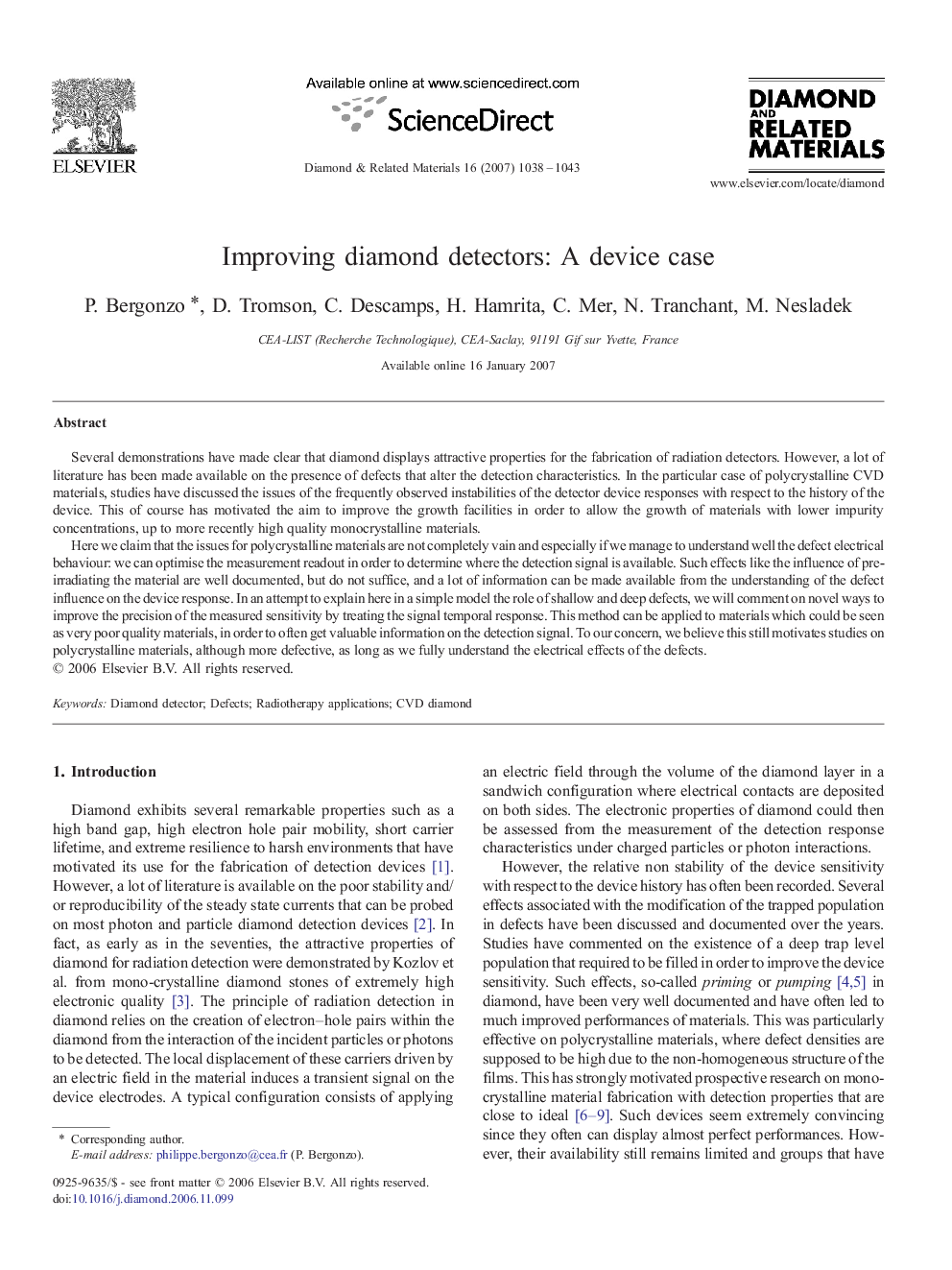| Article ID | Journal | Published Year | Pages | File Type |
|---|---|---|---|---|
| 701331 | Diamond and Related Materials | 2007 | 6 Pages |
Several demonstrations have made clear that diamond displays attractive properties for the fabrication of radiation detectors. However, a lot of literature has been made available on the presence of defects that alter the detection characteristics. In the particular case of polycrystalline CVD materials, studies have discussed the issues of the frequently observed instabilities of the detector device responses with respect to the history of the device. This of course has motivated the aim to improve the growth facilities in order to allow the growth of materials with lower impurity concentrations, up to more recently high quality monocrystalline materials.Here we claim that the issues for polycrystalline materials are not completely vain and especially if we manage to understand well the defect electrical behaviour: we can optimise the measurement readout in order to determine where the detection signal is available. Such effects like the influence of pre-irradiating the material are well documented, but do not suffice, and a lot of information can be made available from the understanding of the defect influence on the device response. In an attempt to explain here in a simple model the role of shallow and deep defects, we will comment on novel ways to improve the precision of the measured sensitivity by treating the signal temporal response. This method can be applied to materials which could be seen as very poor quality materials, in order to often get valuable information on the detection signal. To our concern, we believe this still motivates studies on polycrystalline materials, although more defective, as long as we fully understand the electrical effects of the defects.
